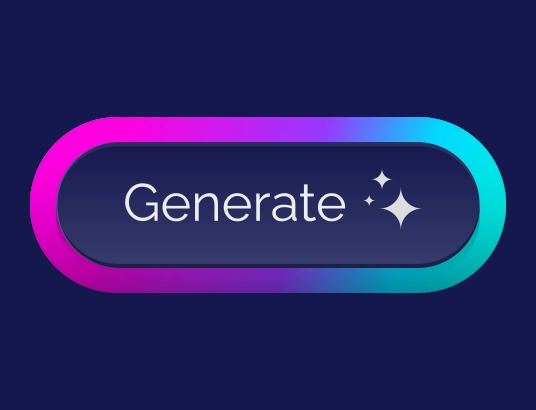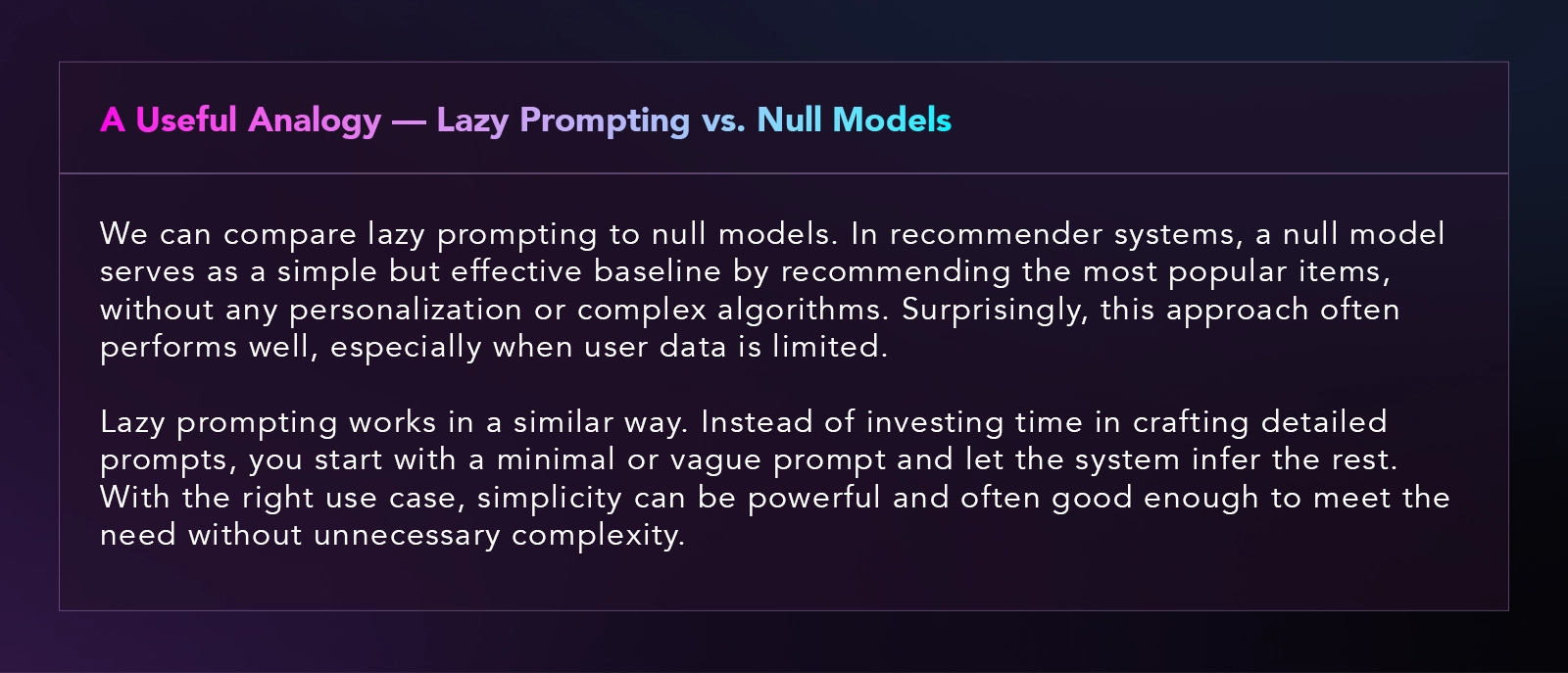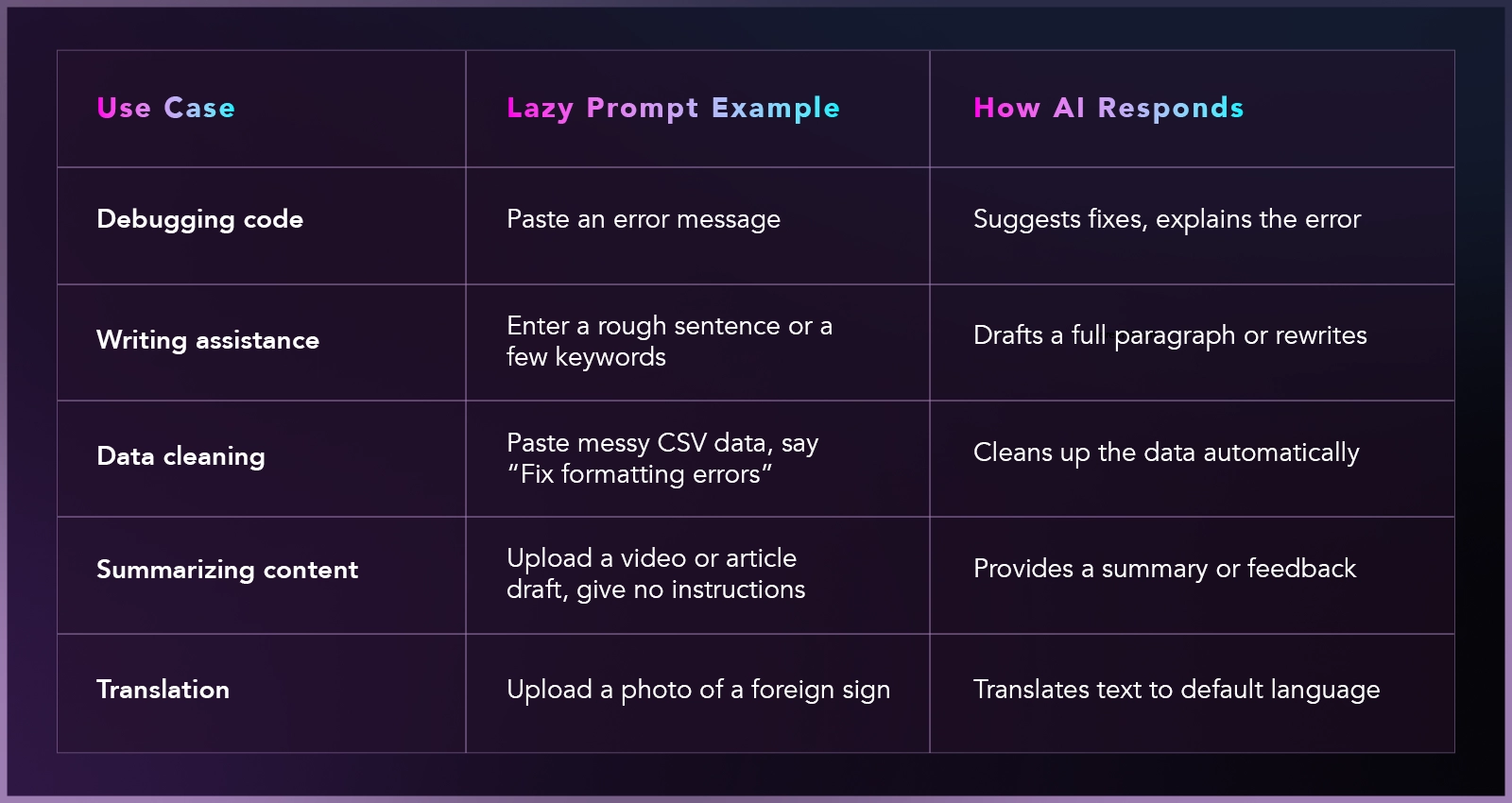- Posted on : May 23, 2025
-
- Industry : Corporate
- Tech Focus : Ignis
- Type: Blog

ChatGPT, the AI chatbot from OpenAI continues to maintain its popularity, reporting over 300 million weekly users1. By now, there’s a good chance, you’ve already used it, and other GenAI chatbots. Maybe you already noticed that you only need to enter a few words. This is known as “lazy prompting in action.” For example, instead of writing “write a detailed story about nature in Alaska,” a lazy prompt may contain just three words - “Story, Alaska, nature.”
Lazy prompting is an emerging technique in prompt engineering that challenges the conventional wisdom of providing detailed, exhaustive instructions to LLMs.
Instead, it advocates for starting with minimal information, such as a vague or no prompt approach, then adding more detail if the initial output falls short. This strategy taps into the strong reasoning capabilities of GenAI systems.
What Is Lazy Prompting?
The definition of lazy prompting is simply giving an AI system a short, imprecise, or minimal prompt, and trusting the model’s ability to figure out what you are asking for and then generating relevant, high quality output. Rather than carefully writing out a detailed prompt, you test the waters with a quick instruction much like asking a colleague for help without over explaining and iterate only if necessary.

Why Lazy Prompting Works
Due to recent advancements, modern LLMs have strong contextual reasoning and inferential skills. This means they can often figure out what you’re asking after you’ve entered minimal information, especially for common or well understood tasks. Lazy prompting capitalizes on these capabilities, making AI interaction more efficient and less burdensome for users.
Key benefits:
- Saves time and effort since you skip the labor of crafting detailed prompts.
- Encourages rapid iteration, meaning that you start simple, and refine only if needed.
- Harnesses AI’s improved reasoning by trusting the model to fill in the blanks.

When to use Lazy Prompting
Lazy prompting is most effective when the task is straightforward, or the context is obvious. It’s also productive because you can quickly judge the quality of the output and respond with another question. With lazy prompting, There’s little risk involved, and mistakes are easy to fix.
Lazy prompting is best suited for brainstorming, drafting emails or blog posts, quick code fixes and data formatting. Here are a few examples:

When to Avoid Lazy Prompting
While there are many great reasons to use lazy prompting, there are instances when you should refrain from using it:
- The task is complex, sensitive, or requires precision.
- Output errors are hard to detect or could have serious consequences.
- When using AI in automated workflows.
Key Takeaway
Lazy prompting is a practical, efficient and focused approach to interacting with today’s GenAI solutions. By starting with minimal input and only adding detail as needed, you can streamline your workflow, encourage creative AI responses, and avoid over-engineering your prompts.

As quoted in this Business Insider article
References




